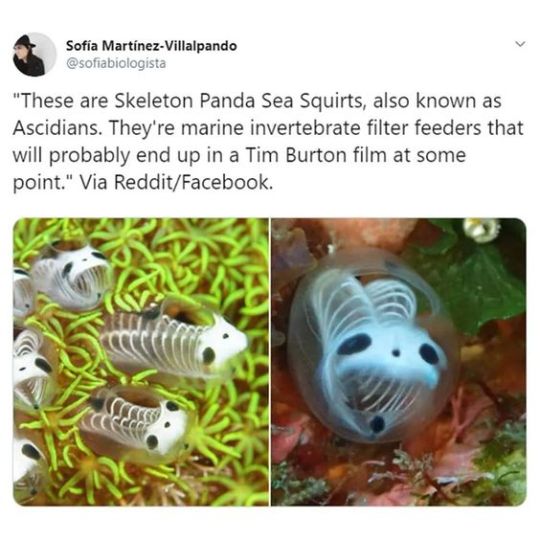#marine invertebrate
Text
Let's Talk Sea Slugs: Rostanga pulchara
Rostanga pulchara is a small species of dorid nudibranch commonly found grazing on the red sponges that give it its color.
The adult below was 16mm long and 8mm wide, but they can grow to as large as 33mm long (Jensen et al 2018).
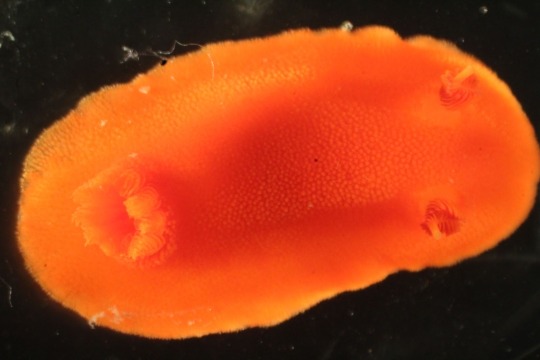
Above - Adult Rostanga pulchara collected from Cattle Point Intertidal, San Juan Island by Babonis Lab, Summer 2022.

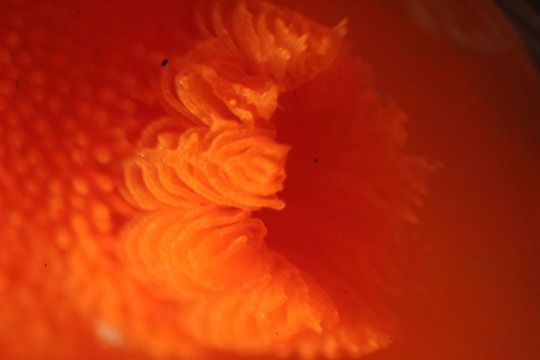

Above - Closeups of Rostanga pulchara. Left - mantle showing the texture and shape of the tubercles. Center - gills. Right - rhinophore.
Along with size and color, a defining characteristic of the nudibranch is its uniquely shaped rhinophores (Jensen et al 2018). One is pictured above on the right.
A good way to find them in the wild is to look for the sponges that they eat. Two of these species are the velvety Clathria pennata and the "volcano-shaped" Acarnus erithacus (Jensen et al 2018). Both sponges are encrusting and highly pigmented.
The pigments from the sponge not only color the adult nudibranchs, but also their eggs (Jensen et al 2018). This can be seen in the early embryos below.
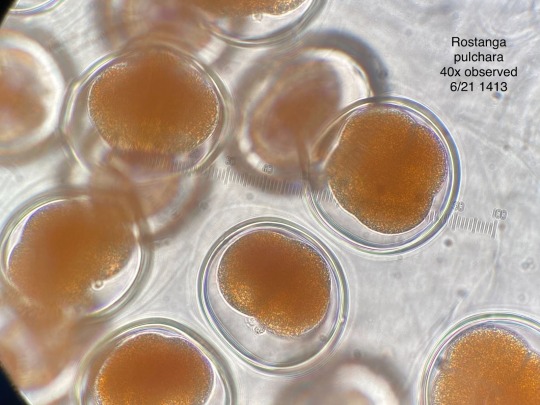
Above - Rostanga pulchara embryos, 2-cell and 4-cell stages. Viewed on 6/21/2022 under 40x magnification. The center 2-cell embryo was 111 microns across.
A week and a half later, these embryos had developed close to the point of hatching.
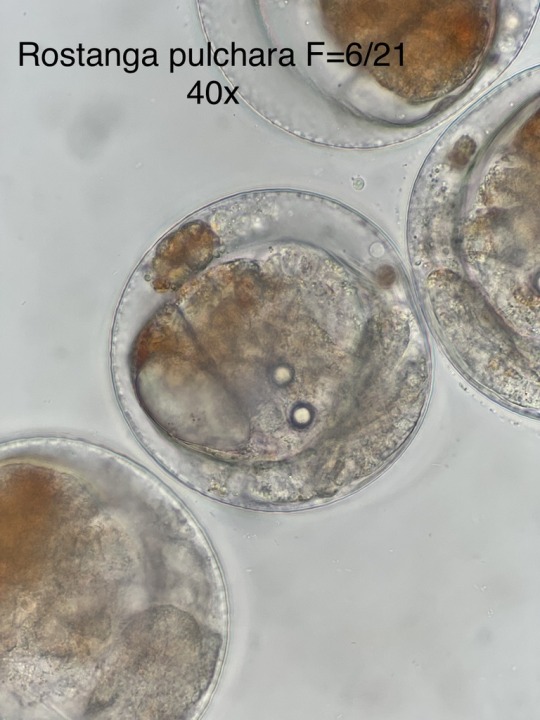
Unhatched veliger larvae, with visible shell anViewed on 7/1/2022 under 40X magnification. The center embryo measured at 125 microns across.
These nudibranchs, like many others, have a larval form called veligers. These veligers have shells and big ciliated lobes.

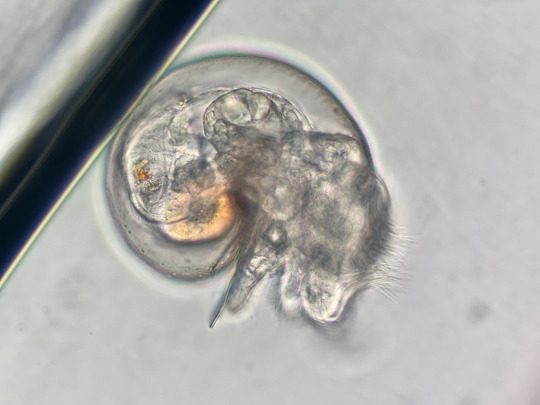
Hatched veliger larvae. Viewed on 7/7/2022 under 40X magnification.
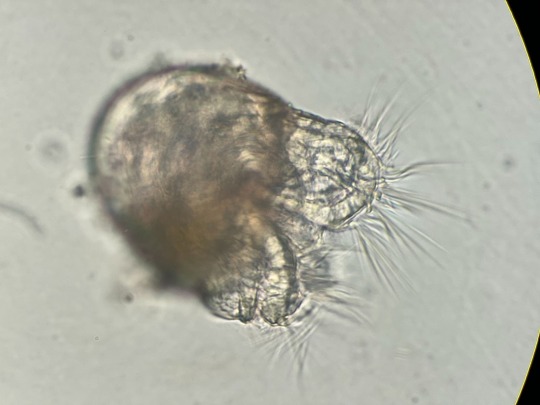


Hatched veliger larvae from the same clutch of original eggs. Viewed on 7/13/2022 under 20X magnification. The larvae on the right was measured as 194 microns across the veler lobes and 178 micros from the top of the shell down to where the veler lobes exit the shell.
Sources:
Personal lab notes and obervations.
Jensen et al. Beneath Pacific Tides. MolaMarine, 2018.
All photographs by JA Fields, do not repost without express written permission.
*If you appreciate the work I do, you can support me through sharing my work, tipping me, or buying my art prints or embroidery.*
#science communication#marine biology#nudibranchs#sea slugs#developmental biology#larval biology#marine invertebrate#embryology#science#marine life#salish sea#sea creatures#my photography#my marine life photos#my sci-comm#my lab notes
18 notes
·
View notes
Photo

Octopuses are one of several marine invertebrates to be recognized as sentient by changes to a new animal welfare bill.
(Image credit: Shutterstock)
327 notes
·
View notes
Video
Hawaiian pom-pom crab by BarryFackler
Via Flickr:
The remarkable Hailey from Kona Diving Company found this tiny pom-pom crab (Lybia edmonsoni) for us.It carries a stinging anemone (Triactis producta) in each claw.
#crab#pom-pom crab#crustacean#invertebrate#arthropod#benthic#Lybia edmonsoni#Xanthidae#marine invertebrate#creature#sea life#marine life#sea creature#organism#animal#life#hand#fauna#being#zoology#biology#underwater photography#reef#ecology#wildlife#nature photography#coral reef#Kona diving#macro photography#undersea
14 notes
·
View notes
Text
Me: marine invertebrates are so interesting. I want to be a marine biologist.
Me in the ocean when my foot touches something:

4K notes
·
View notes
Text
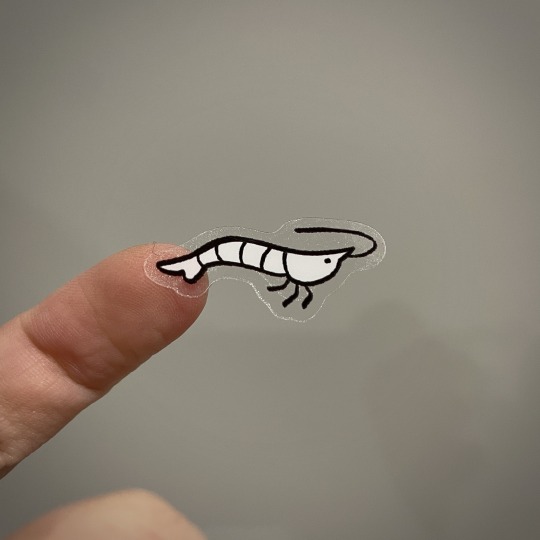
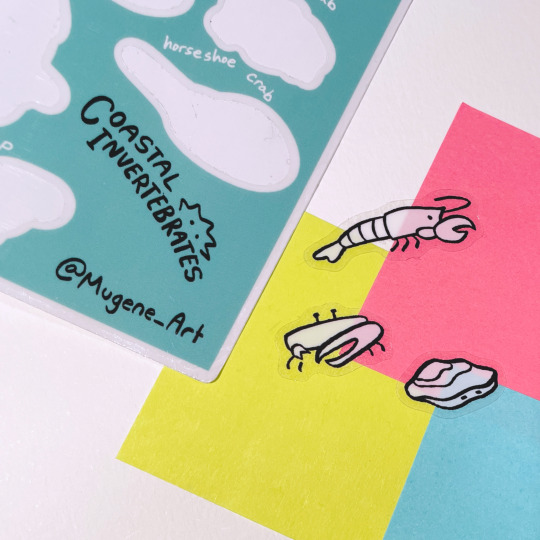

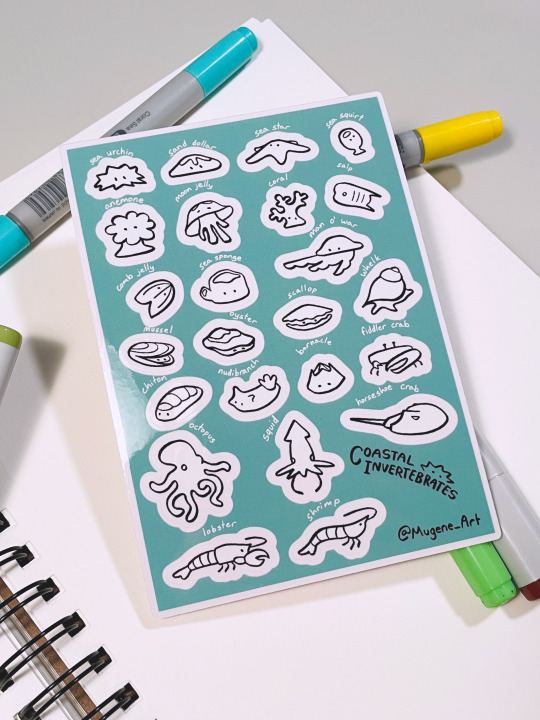
#marine invertebrates#marine biology#invertebrates#shrimp#horseshoe crab#nudibranch#coral#squid#sea anemone#cnidarians#echinoderms#crustacean#mollusk#molluscs#tunicate#sea creatures#sea animals#biology#sticker sheet#stickers#clear stickers#artists on etsy#artists on tumblr#mu's wares
675 notes
·
View notes
Text
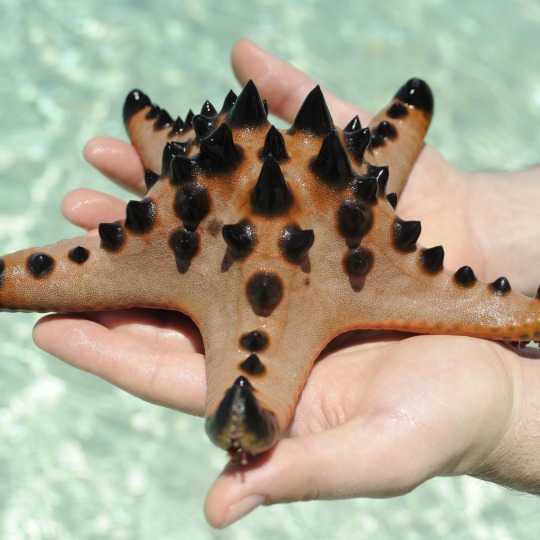
🍪 Feeling hungry? Well, despite its name, the chocolate chip sea star (Protoreaster nodosus) probably wouldn’t taste very good. To start, those “chips” aren't chocolate at all… they’re tubercles, or knobs, and they’re unique to each sea star. No two individuals have the same arrangement of tubercles!
Like many other sea stars, this marine invertebrate eats by pushing its stomach out of its mouth, covering its meal, and then digesting it externally. This critter inhabits the warm waters of the Indian Ocean and Pacific Ocean, where it might be spotted around coral reefs or seagrass beds. It can grow up to 12 inches (30 cm) across.
Photo: woodgreg, CC BY-NC 4.0, iNaturalist
#sea star#starfish#marine biology#cookie#chocolate chips#chocolate chip cookies#science#nature#natural history#animals#paleontology#cool animals#weird animals#marine biodiversity#ocean life#invertebrates#fact of the day#did you know
599 notes
·
View notes
Text


spotted lagoon jelly
picture by @underlyingocean
647 notes
·
View notes
Text


aquatic animal illustrations for friends
#art#artists on tumblr#mixed media#collage#acrylic painting#colored pencil#traditional art#fish#fishblr#fish art#polychaete#marine biology#freshwater fish#marine fish#marine invertebrates#wormart
898 notes
·
View notes
Text





"Nautiluses are a living link to the ancient past.
They’ve been around over 480 million years, cruising deep ocean reefs even before the time of dinosaurs. These soft-bodied creatures live inside an intricately chambered shell.
A nautilus can only sense dark and light with its simple, pinhole-type eyes. But a nautilus can perceive water depth and current directions, as well as current speeds, to help it keep its body upright. A highly developed sense of smell helps a nautilus search for food and find mates."
Full article
- Monterey Bay Aquarium
#nautilus#fauna#monterey bay aquarium#original post#bio#biology#marine biology#bioscience#science#scienceblr#bioblr#molluscs#invertebrates#deep sea#deep sea creatures#fun facts#nature#infopost
2K notes
·
View notes
Photo
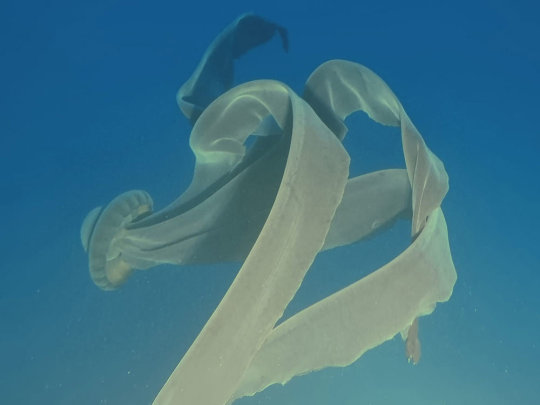
Tourists recently spotted the 30-foot-long invertebrate in shallow waters off Antarctica.
Extremely rare phantom jellyfish caught on camera
PHOTOGRAPH BY MARK NIESINK

#mark niesink#photographer#national geographic#invertebrate#phantom jellyfish#jellyfish#marine#antarctica#nature
3K notes
·
View notes
Video
gold slug by BarryFackler
Via Flickr:
gold lace nudibranch
#nudibranch#marine invertebrate#sea slug#gold lace nudibranch#Halgerda terramtuentis#H. terramtuentis#mollusk#slug#invertebrate#benthic#sea creature#marine life#biology#zoology#ecology#wildlife photography#macro photography#nature photography#underwater photography#undersea#underwater#West Hawai'i#water#wildlife#animal#being#Hawai'i Island#aquatic#marine#2022
3 notes
·
View notes
Text
Welcome to a topsy-turvy Wet Beast Wednesday where I'm discussing one of my favorite cnidarians, the upside-down jellyfish. These are 8 species of jellyfish in the genus Cassiopea, which is the only member of the family Cassiopeidae. What makes these jellies notable is the fact that they spend most of their time lying upside-down on the seafloor.

(image: an upside-down jellyfish swimming. It has a light brown and white striped bell and multiple tentacles that are tuck and white. The tentacles branch and are lined with feathery, light brown structures)
While the majority of jellyfish are predators who drift through the water at the mercy of the currents, upside-down jellyfish have essentially become farmers. Their eight branched oral arms that contain symbiotic algae called zooxanthellae. These algae are photosynthetic and live in a mutualistic relationship with the jellyfish. The jellyfish gets food from the zooxanthellae and they get protection from predators and a place to live. Upside-down jellyfish can survive entirely on the nutrients produced by the zooxanthellae, but they will still feed on zooplankton and other small prey. Upside-down jellies are not the only jellyfish to utilize zooxanthellae, many other species also survive primarily on their symbiotic algae, but they are the only ones to have adapted the benthic lifestyle. They can reach a bell diameter of up to 25 cm (10 inches), or as one source for this stated: about the size of a pie pan.
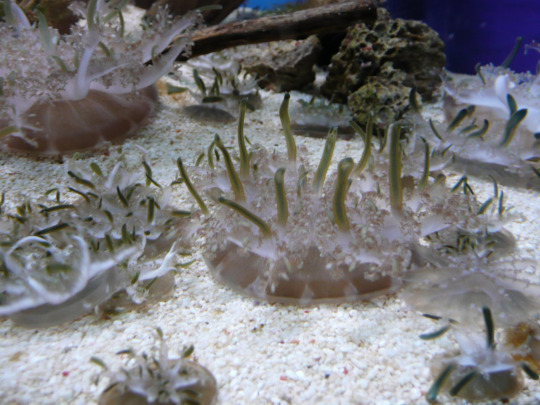
(image: multiple upside-down jellyfish lying on sand. They are ov various sizes and mostly light brown, but have thicker, green tentacles sticking op)
Upside-down jellyfish are found in warm coastal waters in Florida and the Caribbean and in Micronesia, Melanesia, and parts of Polynesia. They require shallow waters to allow enough light to reach their zooxanthellae and are usually found on shady or muddy bottoms. They are highly associated with mangroves and may play an important role in the mangrove habitats by mixing the water to recirculate oxygen and nutrients. They are rarely found alone, instead congregating in large groups that can cover portions of the seafloor. They attach by using their bells as suction cups and rhythmically pulse using the edges of the bell. This pulsing forces water over the gills and can force zooplankton into the stinging cells to become food. Stung prey will fall on the oral tentacles, where it is broken down into fragments that are then intaken through the numerous tiny oral openings on the tentacles. Interestingly, some species have cycles of reduced movement, which is believed to be the first known example of sleep in an animal without a central nervous system. While upside-down jellies can swim, they will usually only do so to escape predators or if their environment becomes unsuitable.
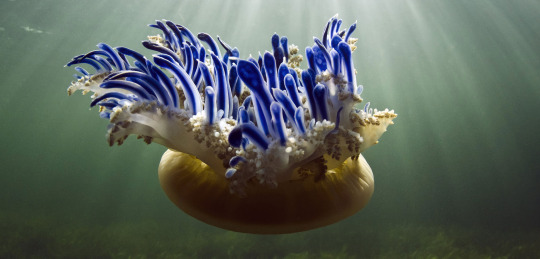
(image: an upside-down jellyfish swimming. The majority of its body is light brown, but it has many tentacles that are dark blue and outlined in white)
While a very neat thing to see underwater, many snorkelers avoid upside-down jellyfish due to a phenomenon called stinging water. This is when people will receive the symptoms of a sting by the jellyfish without actually touching it. While the cause of this was a mystery for a long time, it was solved when a 2020 paper was published in Communications Biology by Ames et al. The scientists discovered that upside-down jellies release clumps of mucus into the water. This mucus is filled with zooxanthellae and stinging cells and many of these clumps also have ciliated cells that allow for limited swimming. These clumps, named cassiosomes, are the source of the stinging water. The paper, titled "cassiosomes are stinging-cell structures in the mucus of the upside-down jellyfish Cassiopea xamachana" speculated that the cassiosomes are used for defense and feeding. The cassiosomes could be released to sting a potential predator from a distance, discouraging it from approaching the jellyfish. Presumably snorkelers trigger this defense when they swim over the jellies, resulting in stinging water. They could also be used to catch prey as zooplankton killed by the stinging cells would have a high likelihood of falling onto the jelly that released them. Because the cassiosomes have zooanthellae in them, they could survive for likely up to several days after release.

(image: a microscope image of three cassiosomes. They are irregularly-shaped blobs somewhat similar to popcorn. They are a dark color with grey outlines. Spots of green algae and white stinging cells dot their surface)
Upside-down jellyfish are threatened by habitat loss as many mangrove forests are torn down for development. They are also threatened by pollution. They are not considered dangerous to humans. The sting of an upside-down jellyfish can result in mild to severe rashes and itching, but is not lethal.
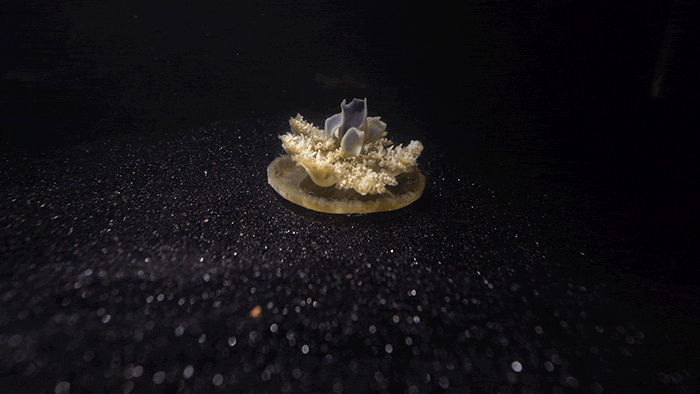
(gif: a lone, light brown upside-down jellyfish on black sediment. The edge of its flat, circular bell regularly pulse upward to move air over its gills and tentacles. This one's pulsing has slowed, which is speculated to be the result of it going through its sleep cycle)
#wet beast wednesday#upside down jellyfish#inverted invertebrate#marine biology#biology#zoology#ecology#animal facts#jellyfish#cnidarians#invertebrate
834 notes
·
View notes
Text


it's ok josuke you aren't the one with a six month old aunt
#older art tag#i think that jolyne in her youth liked dolphins. she seems the type#jotaro on the other hand is canonically a marine invertebrates kind of guy#am not tagging this 1. it was for me. but U guys can look at it too i guess.
533 notes
·
View notes
Text

I randomly encountered this pic from some kid from 2014's powerpoint presentation and the layout was really familiar so I knew what I had to do
1K notes
·
View notes
Text
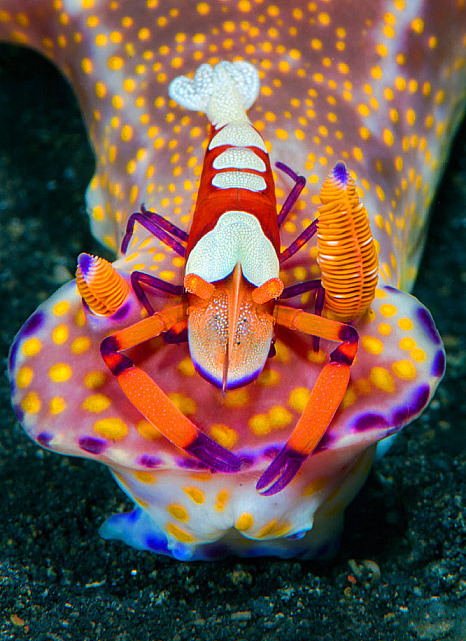
Emperor shrimp (Periclimenes imperator) hitchhiking on large t-bar nudibranch (Ceratosoma trilobatum)
Photo by Alex Mustard
#emperor shrimp#shrimp#colorful shrimp#periclimenes#periclimenes imperator#t-bar nudibranch#nudibranch#ceratosoma#ceratosoma trilobatum#marine#marine life#marine invertebrates#ocean#sea#orange#nature#marine animals#sea creatures
1K notes
·
View notes

